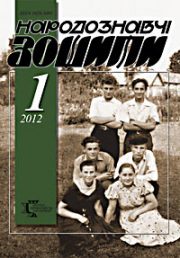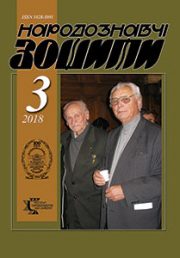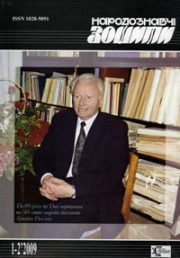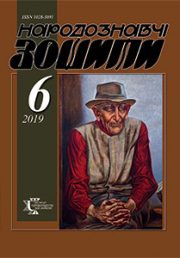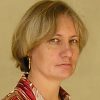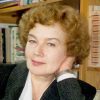The Ethnology Notebooks. 2025. № 5 (185), 1235— 1241
UDK7.03’06:75.051/052:1302(477)
METAMODERNIST VISIONS IN THE ART OF ANDRII DUDCHENKO
SOSIK Olha
- ORCID ID: https://orcid.org/0000-0002-2450-1235
- PhD in Art Studies, Head of Postgraduate Department,
- Mykhailo Boichuk Kyiv State Academy
- of Academy of Decorative Applied Arts and Design,
- 32, M. Boychuk St., 01014, Kyiv, Ukraine,
- Contacts: e-mail:olhasosik@gmail.com
VASKEVYCH Olha
- ORCID ID: https://orcid.org/0000-0002-1936-7342
- PhD in Vocational Education, Acting Head
- of the Departpment of Monumental and Easel Painting,
- Mykhailo Boichuk Kyiv State Academy
- of Academy of Decorative Applied Arts and Design,
- 32, M. Boychuk Str., 01014, Kyiv, Ukraine,
- Contacts: e-mail:kolle_a@ukr.net
Abstract. The article examines the phenomenon of metamodernism as a new cultural paradigm that merges modernist sincerity and spiritual quest with postmodernist criticality and irony.
The relevance of the study is determined by the need to outline the specific features of metamodernist tendencies in contemporary Ukrainian art, particularly in the work of painter and educator Andrii Dudchenko.
The aim of the research is to provide a systematic art historical analysis of the artist’s visual and conceptual projects through the lens of metamodernist sensibility.
The methodological basis includes comparative-historical, iconographic, and hermeneutic approaches, which make it possible to reveal the semantic layers of his works and trace their connection to cultural archetypes and the contemporary sociocultural context.
The study has revealed that Dudchenko’s artistic practice is marked by references to sacred symbolism, archetypal forms, and allusions to classical and Renaissance heritage, while at the same time integrating them into the pressing issues of war and existential choice. His paintings and installations function as visual meditations that unite material form and conceptual idea, opening a space for the viewer’s individual reflection. Particular emphasis is placed on the projects «Renaissance Illusions» and «Silence and the Loudspeaker», in which the artist reinterprets images of the past and actualizes themes of harmony, silence and loudness, and spiritual protection in times of war.
Keywords: Andrii Dudchenko, metamodernism, contemporary art, monumental painting, conceptuality, philosophy of art.
Received 10.09.2025
REFERENCES
- Hubernator, O.I. (2023). Metamodernism as a new paradigm of contemporary cultural practices. Bulletin of the National Academy of Managerial Staff of Culture and Arts, 1, 109—114 [in Ukrainian].
- Burke, E. (2014). A Philosophical Enquiry into the Origin of Our Ideas of the Sublime and Beautiful. Cambridge University Press.
- Onishchenko, O. (2023). The specific features of art in the era of metamodernism: Characteristics of transformation processes. Cultural Thought: Collection of Scientific Works, 1 (Vol. 23, pp. 45—54) [in Ukrainian].
- Holovey, V. (2013). Transformations of religious art in the Renaissance. Scientific Bulletin of Lesya Ukrainka Eastern European National University, 27, 148—152 [in Ukrainian].
- Pakharenko, V. (2021). Metamodernism as an artistic trend: Reflections on a new type of worldview. Ukrainian Language and Literature, 7—8, 56—68 [in Ukrainian].
- Petrova, I.V. (2020). Metamodernism as a cultural studies concept. Issues in Cultural Studies, 36, 14—23 [in Uk rainian].
- Afanasiev, O.I. (2023). Narrative as a field of understan ding between painting and science. Scientific Notes of the International Humanitarian University, 39, 62—65 [in Ukrainian].
